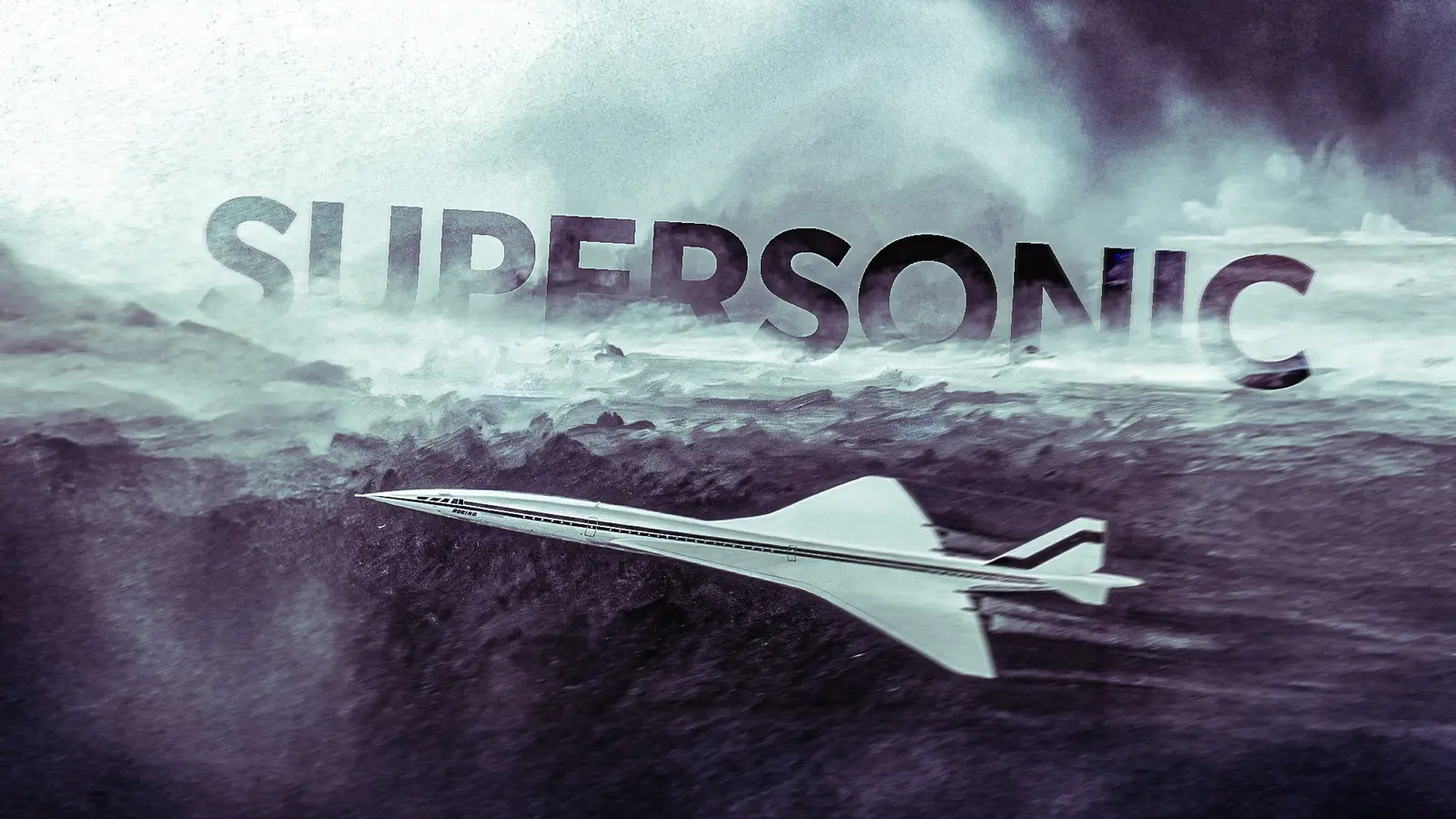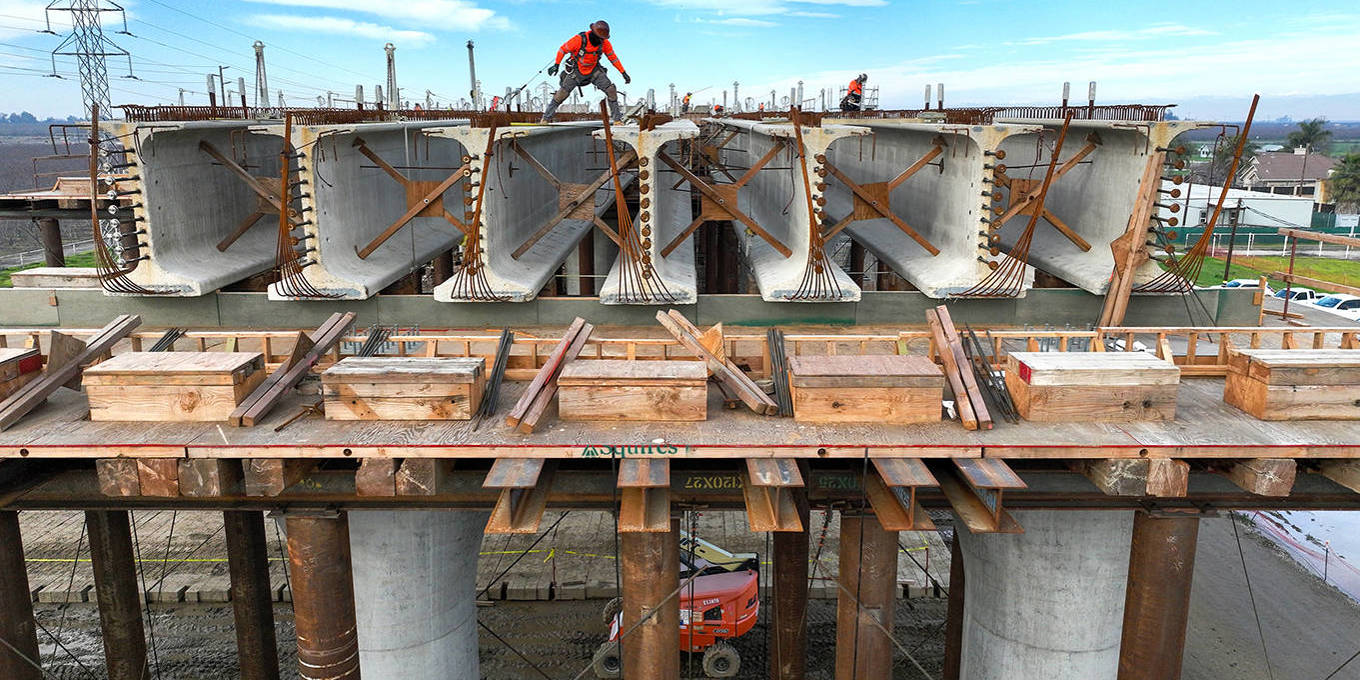Copyright Simple Flying

Over the years, the commercial aviation industry has undergone significant changes and witnessed countless examples of innovation. For example, in the years after World War II, the arrival of the jet age transformed the industry. High-flying jets, like the Boeing 707 and the Douglas DC-8, replaced smaller propeller aircraft and further expanded airlines' operations around the world. Over the following years, jet-powered aircraft would grow increasingly larger, more powerful, and more efficient, eventually turning into modern day commercial travel. However, just as the jet age was ushered into the commercial aviation industry in the 1950s, engineers and governments around the world set their sights on the next tier of commercial travel, supersonic flight. Europe developed the Concorde, a legendary supersonic commercial transport aircraft, while the Soviet Union answered with the Tupolev Tu-144. However, in the United States, several commercial aircraft manufacturers developed supersonic commercial aircraft of their own. Although none of these aircraft would be brought to full-scale production or even enter commercial service, Boeing led the way with what it hoped would be the most advanced passenger aircraft ever built. Let's take a closer look at the Boeing 2707, the company's answer to commercial supersonic travel. The Early Development Of An American Supersonic Aircraft Boeing's studies of supersonic transport can be traced back to the early 1950s. In 1952, the company officially began researching small-scale supersonic transport (SST) projects. However, in 1958, Boeing established a permanent supersonic transport research group, and developed an aircraft originally called Model 733. Early models of this aircraft featured a large delta wing, although the company would later update the model with a swing-wing instead. Shortly after President John F. Kennedy took office in 1961, the President tasked the Federal Aviation Administration (FAA) with establishing national goals in the aviation sector up until the 1970s. The department began two projects: Project Beacon, which focused on navigational systems, and Project Horizon, which focused on technologically advanced civil aviation aircraft. Among other suggestions, Project Horizon was used to spearhead the development of supersonic transport within the United States. Overall, SST was a focus for the FAA at the time, mostly due to the concept that the aircraft's high speed would allow it to fly more trips than a subsonic aircraft, which means it would have a higher utilization. Because of this, not only were various US-based companies researching supersonic transport, but companies around the world began to study this concept. The Launch Of The Concorde By the early 1960s, several European companies had created substantial SST research projects. In November 1962, British Aircraft Corporation and Sud Aviation announced a joint venture, later called the Concorde. The advanced aircraft took several years to develop, as the first prototype conducted its maiden flight in March 1969. The flight testing program of the Concorde took just as long, with the aircraft finally achieving its certificate of airworthiness in October 1975. Overall, the Concorde featured a large delta wing and was configured without a tail. It also used an early fly-by-wire flight control system. The Concorde utilized four Olympus engines, similar to the engines used on the Avro Vulcan bomber. These engines could each produce over 38,000 pounds of thrust with the use of an afterburner, helping the Concorde achieve the following performance specifications: The Concorde was officially introduced to commercial service by British Airways and Air France on January 21, 1976. These two airlines became the main operators of the legendary aircraft, typically flying long-haul transatlantic routes, including London to New York, London to Miami, Paris to New York, and Paris to Washington, D.C. Overall, only 20 aircraft were built, as production stopped in 1979. The Boeing 2707's US-Based Competition The launch of the Concorde program in 1962 came as a surprise to the US, where many felt that the country had fallen behind on civil aviation development. Just three days after the launch of the Concorde program, the FAA Director at the time, Najeeb Halaby, wrote to President Kennedy about the need for the US to develop its own SST aircraft, worried about falling behind in the commercial aviation industry. This led Kennedy to introduce the National Supersonic Transport program in June 1963. Beyond Boeing, several other companies received requests for proposals to fulfill this new program, including Lockheed and North American. Lockheed developed the CL-823 as a response. This aircraft featured a delta wing, similar to the Concorde. This aircraft could reach a cruise speed of around Mach 2.7. North American developed its own aircraft, later designated the NAC-60. This aircraft was similar to a scaled-up variant of its bomber prototype, the XB-70 Valkyrie. The NAC-60 did not utilize horizontal stabilizers but used high-mounted canards near the cockpit. The aircraft also utilized high-lift devices on the leading edge, helping the aircraft achieve the following estimated performance specifications: The Design Of The Boeing 2707 Boeing's entry into the National Supersonic Transport program was the Model 733, later called the Boeing 2707. The design of the aircraft somewhat resembled the later introduced B-1 Lancer. After a lengthy program review, the Boeing 2707 was selected as the winner of the competition on January 1, 1967. The Boeing 2707 was a technologically advanced aircraft. Early in the design process, Boeing introduced a unique swing-wing design that included a blended wing root that spanned almost the entire cabin. It also featured high-lift devices on both the leading and trailing edges of the wing. However, later design changes forced Boeing to fall back to a delta wing configuration and also added canards to the nose of the aircraft. The Boeing 2707 was also powered by four General Electric GE4 turbojets, which each provided the aircraft with over 63,000 pounds of thrust, helping the aircraft achieve the following estimated performance specifications: The aircraft would have been one of the earliest widebody designs. The SST aircraft could seat passengers in a 2-3-2 configuration. Other interior features included early inflight entertainment systems and six-inch windows, although the internal pane was 12 inches, which gave the illusion of larger windows. The Cancellation Of The Boeing 2707 Project By the late 1960s, the Boeing 2707 had garnered interest from airlines around the world. This included Alitalia, Canadian Pacific Airlines, Delta Air Lines, Iberia, KLM, Northwest Airlines, and World Airways. By 1970, over 120 aircraft were ordered. Initially, the SST program was hailed as a technological triumph in the aviation industry. However, by the 1970s, the public was becoming increasingly opposed to supersonic transport. Critics questioned the enormous costs of funding the project, while environmental groups were concerned about sonic booms, ozone depletion, and noise pollution that could come with the introduction of an SST aircraft on US soil. The final blow to the program, however, came in March 1971. At this time, the US Congress voted to end federal funding for the SST program. The Boeing 2707 project was canceled before any prototypes were ever completed. Instead, only two full-scale mock-ups were built. The end of the SST program marked the end of the US's bid to dominate the supersonic passenger market. The Concorde went on to fly for nearly 30 years, and the US never brought an SST aircraft to market, as major commercial aircraft manufacturers turned to more efficient, environmentally conscious aircraft instead. The Aftermath Of Supersonic Commercial Transport Although the Boeing 2707 program never saw an aircraft built, the project's influence on the aviation community was far-reaching. In the wake of the SST program's cancellation, Boeing redirected its resources to improving its subsonic airliner offerings. This would eventually lead to the introduction of the Boeing 747 in 1970, which helped to redefine long-haul travel. The success of this aircraft, with high capacity and improved efficiency, would shape the future of the commercial aviation market. Overall, the Boeing 2707 program and the development of SST aircraft in general left a cultural legacy. The Concorde would go on to become the icon of supersonic travel and is currently looked upon as one of the most advanced commercial aircraft ever introduced.



